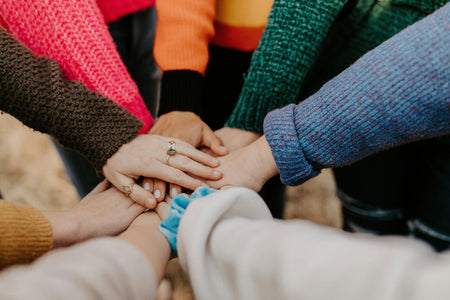Menstrual Health Management (MHM) has gained attention in the global development agenda. However, despite the fact that it plays a key role in 6 of the Sustainable Development Goals, it does not have its own category, which hinders research and therefore policy making progress. We’re missing out on opportunities of pulling on the same string and combining research efforts.
Why Menstrual Health Management Matters
Lack of access to menstrual health solutions touches a person’s life in several ways. Since most people (very understandably) will avoid a situation where they could leak and stain their clothes in public, not having sanitary solutions hinders access to education and work.
When girls and women use non-absorbent solutions (such as rags, newspapers or the same pad for way too long), they become more vulnerable to infections, some of which, like bacterial vaginosis, makes them more vulnerable to STIs and HIV.
Menstruation is very often surrounded by the same mystery, taboos and lack of information as reproductive health. The silence around menstruation goes hand in hand with silence around the female anatomy, the ins and outs of how one gets pregnant or protects herself or himself against STIs.
Periods, and not being able to manage them in a safe and dignified way, become a source of shame about poverty and lack of resources. No one should go through so much just because their body is doing what it is supposed to do.
Confusion about where to put MHM
Thankfully, the last few years have seen a rise of awareness on all these issues, and since 2013 we celebrate Menstrual Hygiene Day on the 28th of May. From a digital outroar against the tampon tax, to the rise of reusables to the outrage about the practice of chhaupadi, menstruation has been on the news more than ever lately and that is a good thing.
Menstrual health management is becoming increasingly prevalent on the agenda of more and more organisations. However, there seems to be some confusion about “where” MHM belongs? Is it WASH (Water, Sanitation and Hygiene)? Is it reproductive health? Is it a gender issue?
Since MHM affects the life of menstruating and non-menstruating people (the high cost of sanitary products is a burden for many families) and menstrual health care also affects 6 Sustainable Development Goals, is it not time it got its own slot?

Menstrual Health Management is under-researched: Giving it it’s own category can solve this.
MHM is terribly under-researched, there does not seem to be an average of how many pads or tampons a girl or woman needs to get through her period. Sure, every woman has a different flow but when organisations and governments propose MHM interventions, they must have an indication of how many pads are reasonable per cycle. Most organisations talk about “a pack”. A pack more often than not contains 8 pads. That is 2 pads a day for an average period that lasts 4 days.
Making healthy menstrual management the goal itself – not only its practical consequences.
It seems that we value sound MHM as long as it has “results”: girls improving their school attendance, or families being less burdened by the cost of pads and tampons, or less incidences of infection etc. These are all, of course, desirable consequences of managing menstruation in a healthy way, but shouldn’t managing menstruation in a healthy way be a goal in itself?
Across different studies (most of which call for more research), girls and women reported feeling less embarrassed while menstruating, and generally more confident, when they had access to menstrual care products.
A study in Ghana indicates that puberty education alone has nearly the same positive effect on school attendance as puberty education plus pads. Other research suggests that education alone can decrease unwanted pregnancy rates.
MHM needs to stop being a subcategory within other interventions and get its own category and dedicated research.

We can start by implementing the 3 following guidelines:
1) Puberty, menstrual care and reproductive health education.
No matter the basis of the programme (disposable pads, reusables or baseline data collection), MHM programmes should always include an element of education. Girls and women have the right to know what is going on with their bodies and how to look after themselves. Knowledge can be the trigger that will help them make better choices for themselves in the future.
2) Sustainable, realistic solutions that adapt to the programme participants, and not the other way round.
When it comes to MHM, like in most things in life, one size (or product) does not fit all. It is essential to let go of the idea of the “perfect solution”. If girls and women do not have panties, pads will not be very useful for them, unless we also provide those. We need to consider access to water and what are the options to dispose of products, how one can wash them, dry them, boil them. Culture and acceptability are important and very often school programmes will start by reaching out to the elders in the community
3) Demand more Research
Because MHM affects a person’s life in so many different ways, we need sound research that will help make programmes as effective as possible. Research on health (infections, rashes etc), school attendance and graduation from primary to secondary and beyond, participation, self-efficacy, teen pregnancy rates, self-esteem, well-being and economic independence later in life would all be useful.
Treating the right of people to manage their periods in safety and with dignity as a human right means being prepared to address all the complex issues that surround menstruation.
Menstrual Health Day is a great occasion for different actors and stakeholders to get together, join forces and share the experiences and expertise that can lead up to a more unified curriculum that will give menstrual health management the space and resources it needs.







